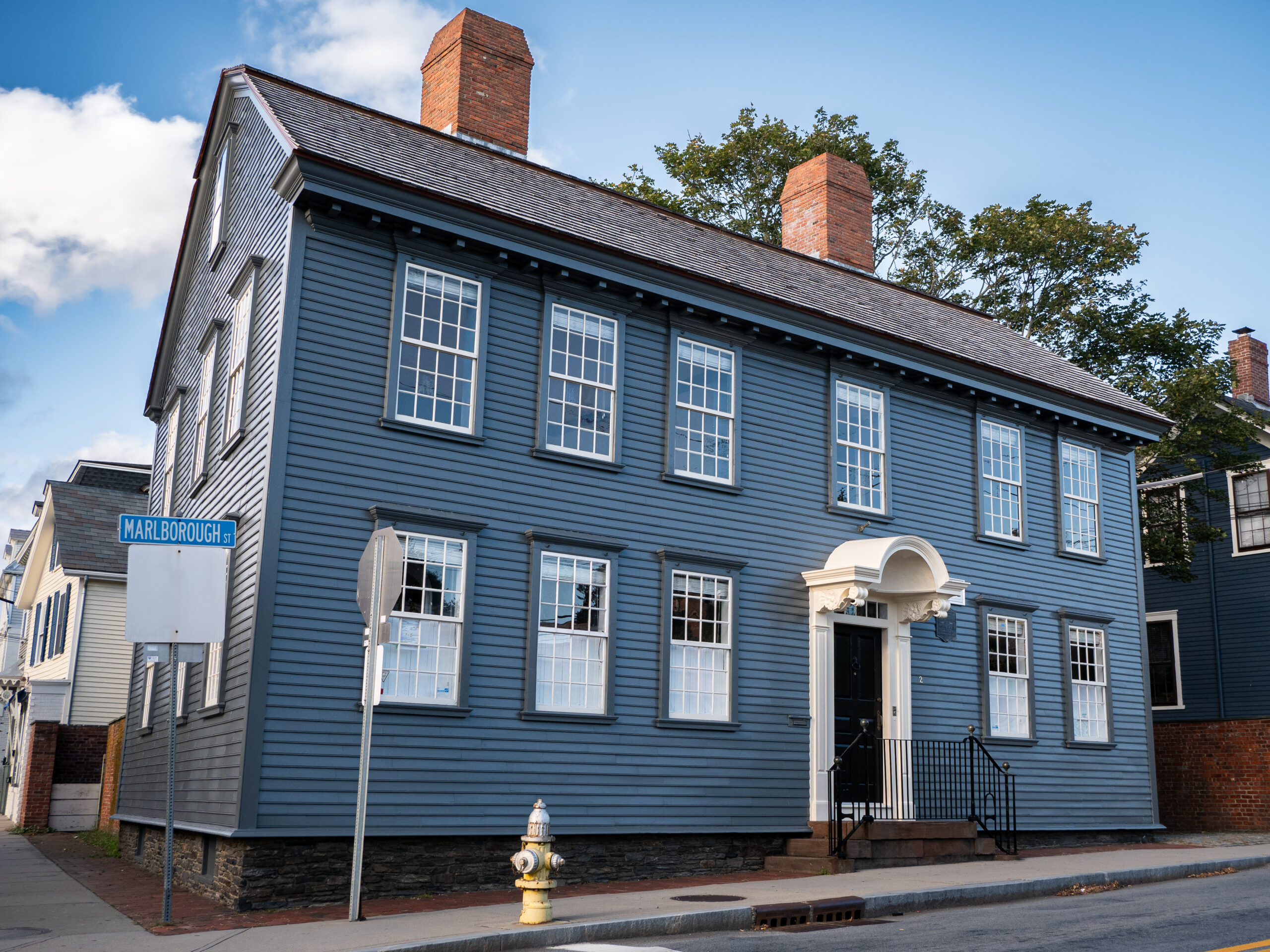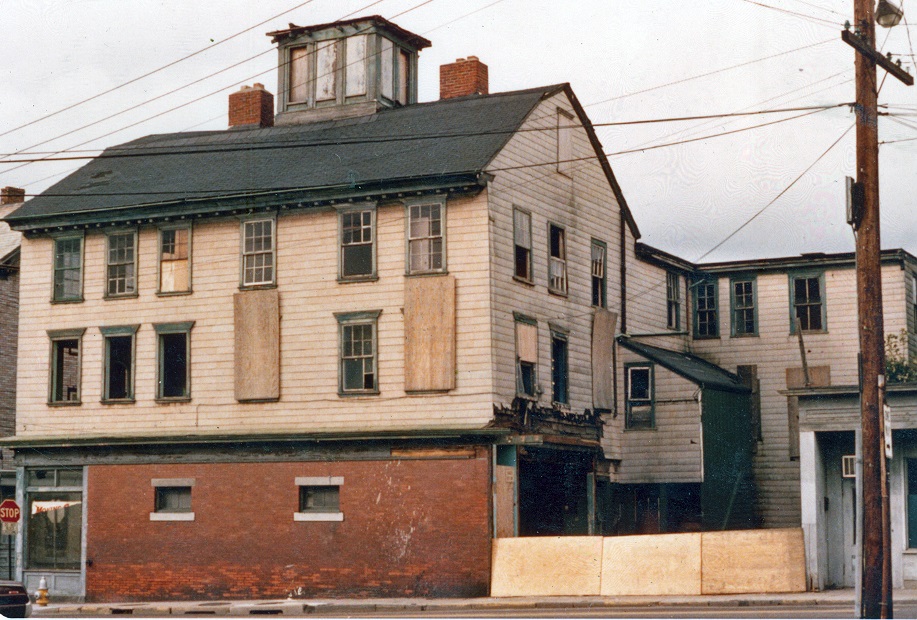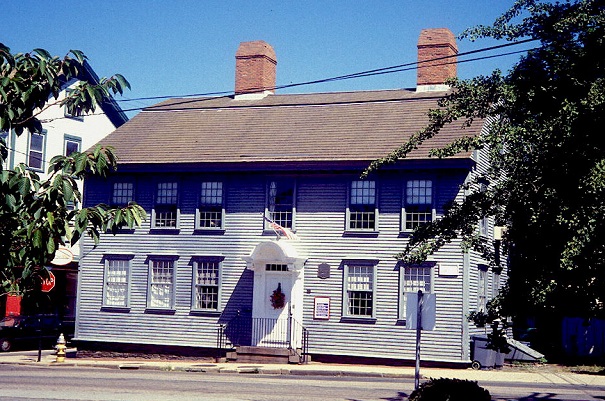Architectural story:
Built ca. 1730, the house at 2 Marlborough Street is a two-story building with two interior chimneys and a gambrel roof. The house was enlarged and altered in the mid-18th century. The 1730 building was smaller and probably had a center chimney. The shell doorway was likely a part of a 1737 enlargement. The house received significant changes to the interior, as well as the addition of a window bay on the west end, during the Greek revival period (1820 to 1850). The first-floor rooms had been redone rather in the Greek style and the restoration reflects this design influence. The second and third floors still reflect eighteenth-century details.
About 1900, the house was raised to make way for commercial space at ground level. This was a common practice in Newport and many 18th and early-19th century buildings are like this today. The building became a grocery store after it was raised. Its last use before being NRF acquired the building was as a furniture store.
Restoration story:
After being purchased by NRF in 1971, it was restored in 1973-74 to reflect the mid-18th century floorplan.
The restoration process was complex and included lowering the house back to street level (and removing the added-on commercial space). The house was raised slightly and blocked while the commercial walls were demolished. The house was then lowered and rolled back into the yard while a cellar hole was dug and concrete walls poured. Finally, the house was rolled forward over the new cellar to its original street-level position.
NRF reproduced the doorway from the shell-hooded doorway of the Ayrault House at the Newport Historical Society. This decision was based on records indicating that in 1737 John Stevens made a doorway for Coddington using the Ayrault House doorway as a model.
People story:
John Coddington had a house constructed on this lot by 1732, and the house was later purchased by the Martin Howard family in 1744. It remained in the Howard family until 1855, when it was sold and was subdivided until multiple units and commercial space. Throughout the 19th and 20th centuries, clerks, milliners, ensigns, grocers, bookkeepers, and a reporter all lived here.




